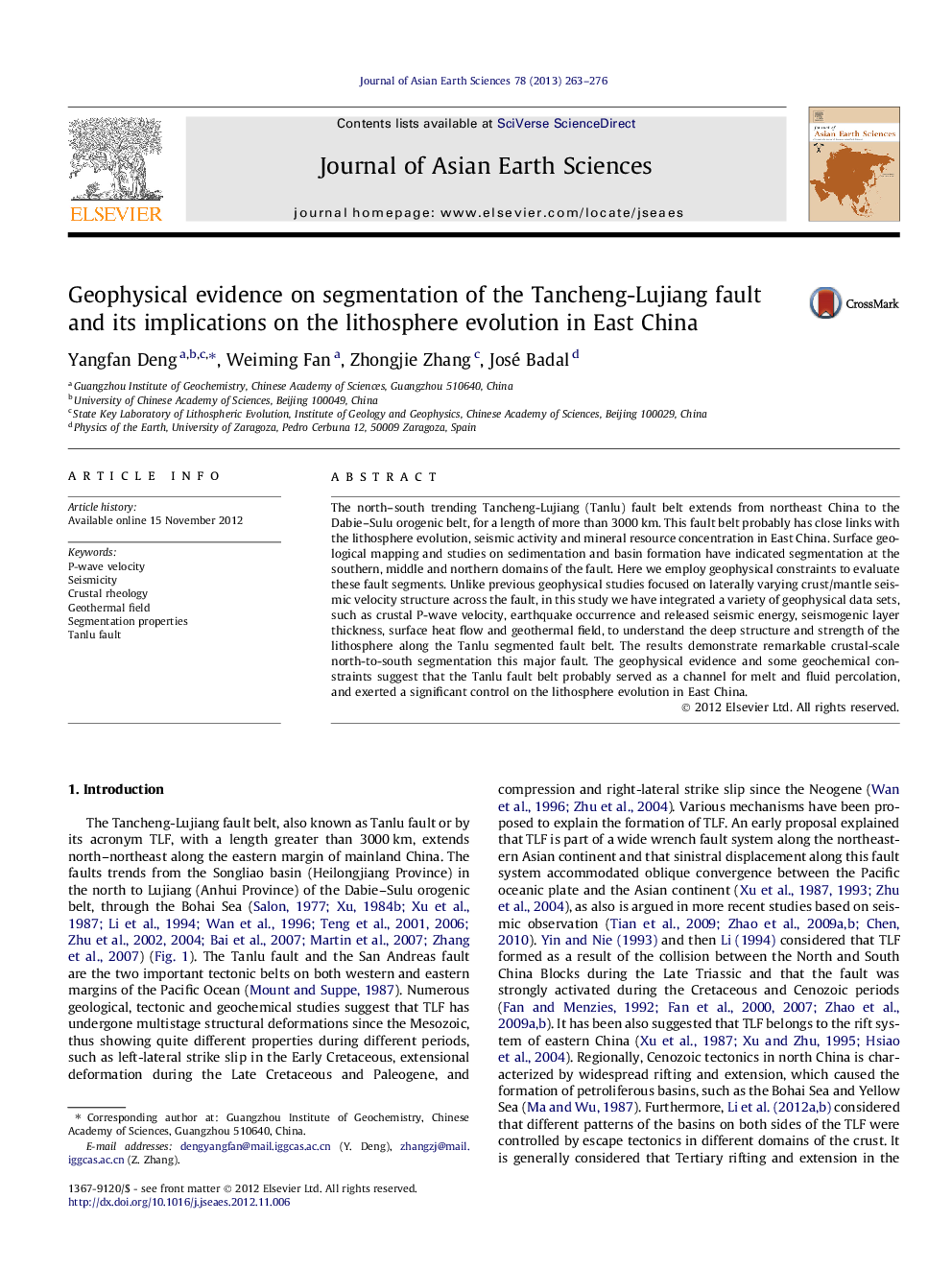| Article ID | Journal | Published Year | Pages | File Type |
|---|---|---|---|---|
| 4730847 | Journal of Asian Earth Sciences | 2013 | 14 Pages |
The north–south trending Tancheng-Lujiang (Tanlu) fault belt extends from northeast China to the Dabie–Sulu orogenic belt, for a length of more than 3000 km. This fault belt probably has close links with the lithosphere evolution, seismic activity and mineral resource concentration in East China. Surface geological mapping and studies on sedimentation and basin formation have indicated segmentation at the southern, middle and northern domains of the fault. Here we employ geophysical constraints to evaluate these fault segments. Unlike previous geophysical studies focused on laterally varying crust/mantle seismic velocity structure across the fault, in this study we have integrated a variety of geophysical data sets, such as crustal P-wave velocity, earthquake occurrence and released seismic energy, seismogenic layer thickness, surface heat flow and geothermal field, to understand the deep structure and strength of the lithosphere along the Tanlu segmented fault belt. The results demonstrate remarkable crustal-scale north-to-south segmentation this major fault. The geophysical evidence and some geochemical constraints suggest that the Tanlu fault belt probably served as a channel for melt and fluid percolation, and exerted a significant control on the lithosphere evolution in East China.
• We have integrated a variety of geophysical data along TLF, which demonstrate remarkable north-to-south segmentation. • The formation of the south TLF is closely related to the collision between the Yangtze Block and the North China Block. • Taking consideration of the geophysical and geochemical responses, TLF plays a key role in the evolution of East Asia.
